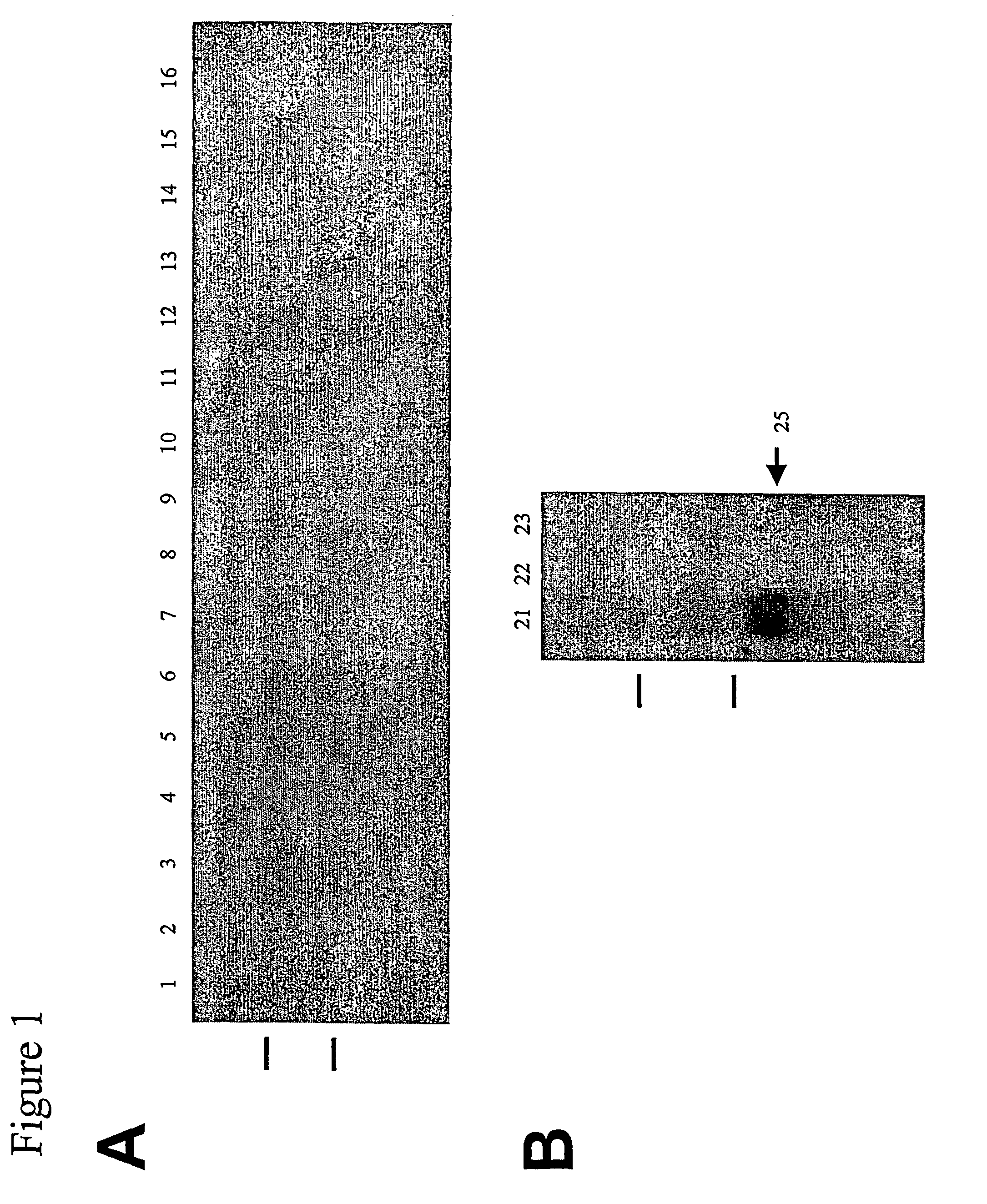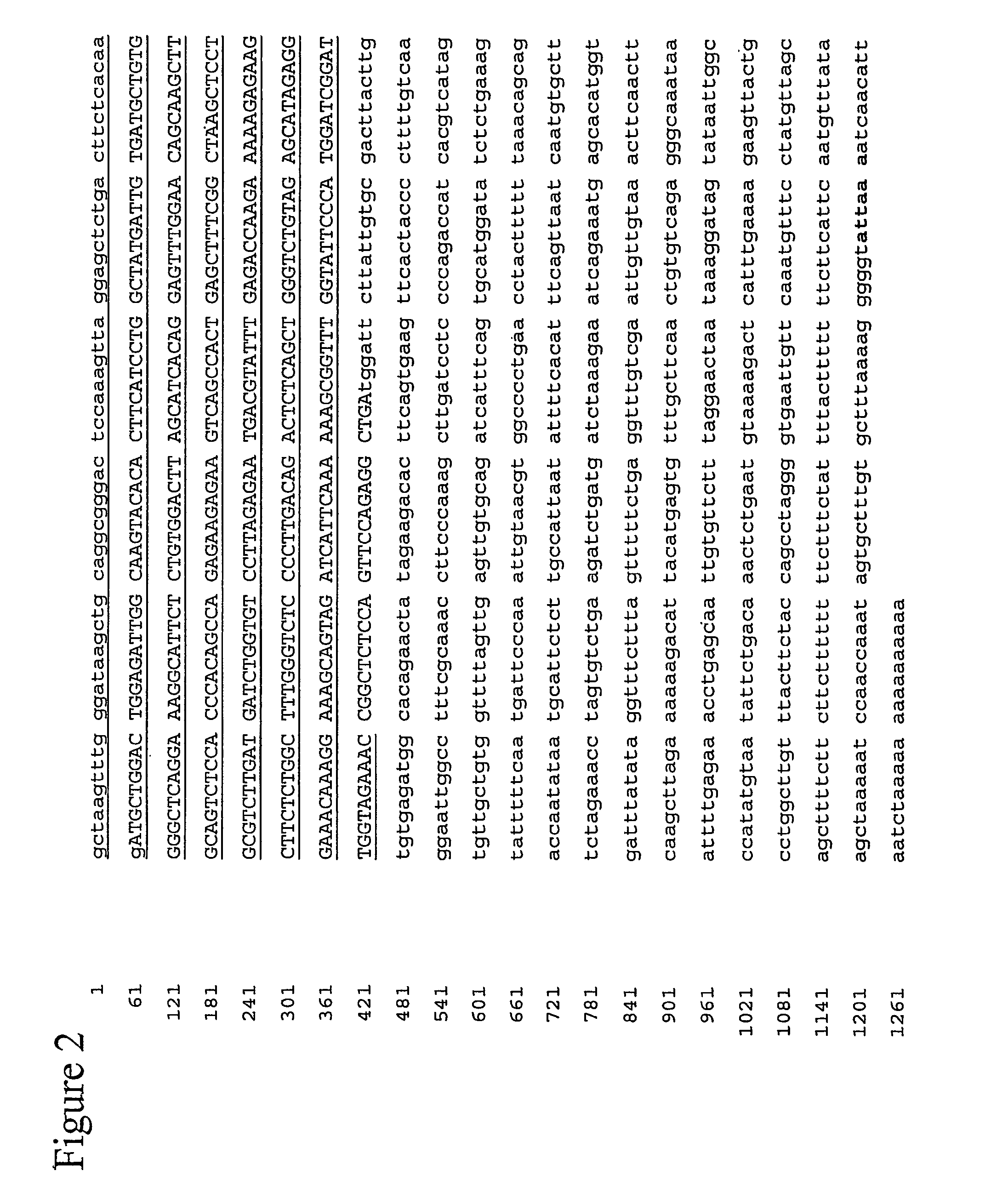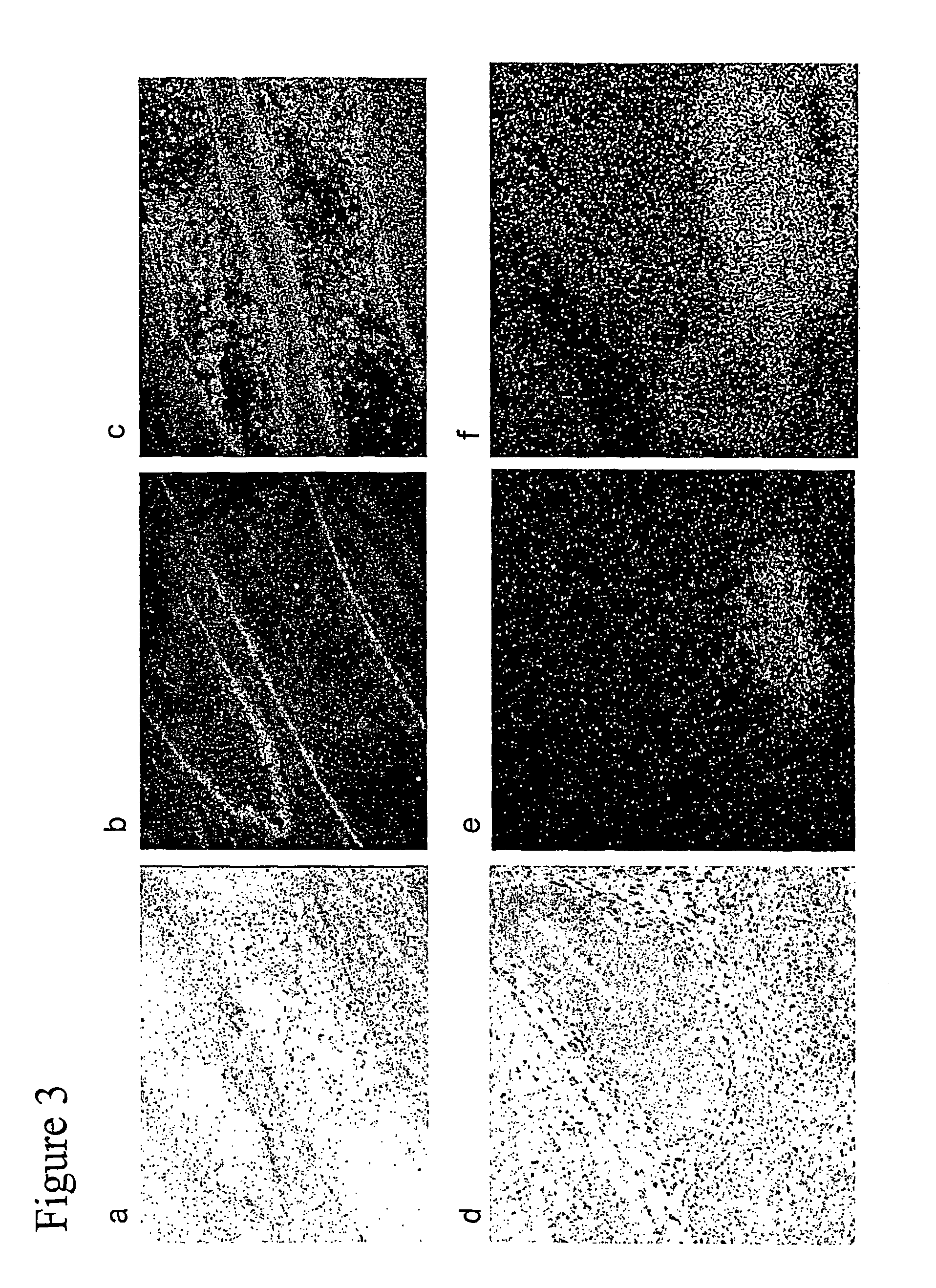Bone polypeptide-1
a polypeptide and bone technology, applied in the field of bone polypeptides and active fragments thereof, can solve the problems of slowing down the progression of disease, not really helping in the reconstruction of lost bone, and few molecules have been shown to notably increase bone mass in osteoporotic patients
- Summary
- Abstract
- Description
- Claims
- Application Information
AI Technical Summary
Benefits of technology
Problems solved by technology
Method used
Image
Examples
example 1
B) Example 1
Cell Lines Secreting BP-1 Protein Products in the Culture Medium
[0169]The expression vector used to obtain stable cell lines producing BP-1 is schematized on FIG. 7A. Plasmid RC33 (see provisional patent application and international patent application PCT / CA02 / 00997) was digested with KpnI and EcoRI and plasmid GD23 (see Materials and Methods) was digested with KpnI and Mlul. Both digests were treated using the Klenow fragment of DNA polymerase I to blunt the 5′ protruding extremities generated by EcoRI and Mlul. The 5194 bp fragment of the RC33 digest and the 473 bp fragment of the GD23 digest were purified and ligated. The resulting vector is designated GD46. A similar vector comprising the coding sequence for human BP-1 was obtained and is designated GD45. One of the transcription unit of GD46 comprises the cytomegalovirus immediate early gene enhancer / promoter regions (700) followed by the coding sequence for mouse BP-1 (701) and a bovine growth hormone polyadenylat...
example 2
C) Example 2
Method to Partially Purifly the BP-1 Protein Products from Cell Culture Medium
[0172]Six million cells stably overexpressing mouse BP-1 (clone 293-GD46-7) were seeded in a 175 cm2 flask and grown for 48 hours in DMEM supplemented with 10% FBS, at which stage the monolayer was approximately 90% confluent. The cells were then washed 2 times with pre-warmed phosphate buffered saline and once with serum-free DMEM. The cells were incubated for 48 hours in 20 ml of serum-free DMEM. The medium was then collected and spun down at 800 g for 2 minutes to remove floating cells and debris. All subsequent procedures were performed at 4° C. using a BioRad BioLogic™ LP Chromatography system. The conditioned medium containing BP-1 products was first diluted 2-fold with equilibration buffer (Buffer A: 25 mM HEPES pH 7.8 and 100 mM NaCl) and filtered through a 0.45 μm Filtropur™ S membrane. The diluted medium was then loaded at a flow rate of 2 ml / min on a column (1.5 cm×20 cm) packed with...
example 3
D) Example 3
Recombinant Adenovirus Particles Expressing the BP-1 Coding Sequence and Uses Thereof
[0174]This example illustrates the various functionalities of an adenovirus-based expression vector designed according to the present invention. To obtain a ‘shuttle’ vector for inserting a transcription unit into an adenoviral genome, a 1689 bp Stul-Nael fragment from GD23 (see Materials and Methods) was blunted and cloned in the EcoRV site of pQBI-AdBN (qBiogene, Montreal, Canada) which had been previously engineered to replace the unique ClaI site with a unique Pmel site. The resulting vector is designated GD28b and comprises a transcription unit for mouse BP-1 coding sequence (901) flanked by nucleotides 1-102 (902) and nucleotides 3334-5779 (903) of the Adenovirus serotype 5 genome (GenBank™ accession number 9626187). A map of GD28b is given in FIG. 9A.
[0175]The transcription unit for BP-1 comprised in GD28b was incorporated in an adenoviral genome by in vivo homologous recombinatio...
PUM
| Property | Measurement | Unit |
|---|---|---|
| Tm | aaaaa | aaaaa |
| temperatures | aaaaa | aaaaa |
| thermal melting point | aaaaa | aaaaa |
Abstract
Description
Claims
Application Information
 Login to View More
Login to View More - R&D
- Intellectual Property
- Life Sciences
- Materials
- Tech Scout
- Unparalleled Data Quality
- Higher Quality Content
- 60% Fewer Hallucinations
Browse by: Latest US Patents, China's latest patents, Technical Efficacy Thesaurus, Application Domain, Technology Topic, Popular Technical Reports.
© 2025 PatSnap. All rights reserved.Legal|Privacy policy|Modern Slavery Act Transparency Statement|Sitemap|About US| Contact US: help@patsnap.com



